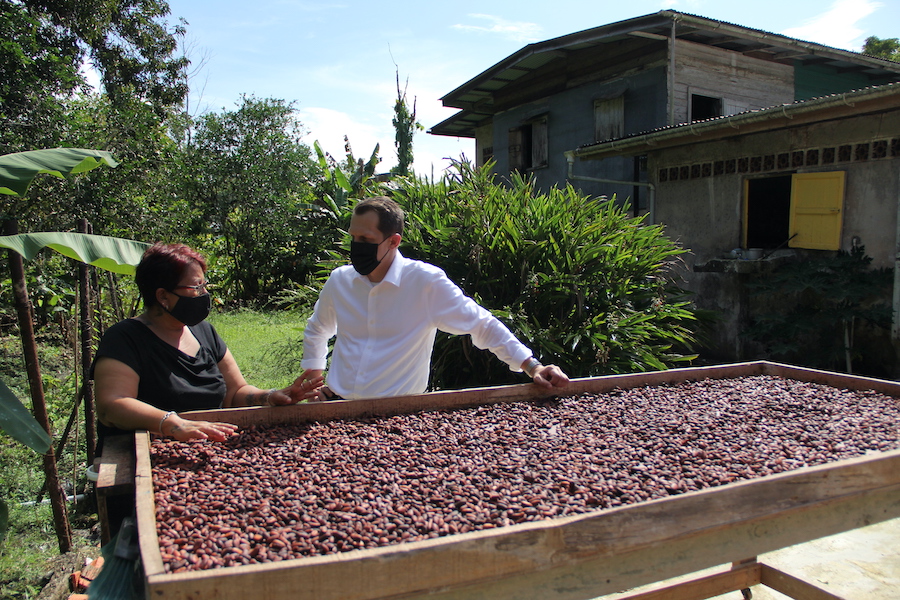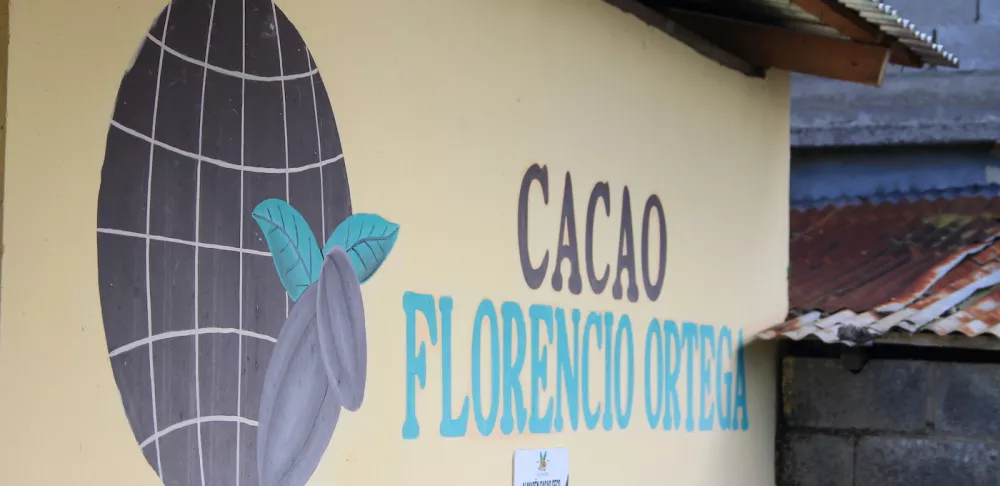A new year is upon us. It's a time for reflection, and also a time to look forward and set goals.
As a longtime working pastry chef, I’m no stranger to thinking at the leading edge of fads and trends emerging both within the industry, and among guests and customers as well. Now that my headspace is increasingly occupied by issues affecting the world of chocolate, I’ve begun to consider trends that play out across the entire cocoa supply chain, from producer farmers and manufacturers to chefs and consumers. Below, I’ll tease out just a few of the factors influencing how we source, make and enjoy chocolate in the coming year.
COVID Rebounds
Now two years into the global Covid-19 pandemic, the emergence of new virus variants continues to affect every link in the cocoa supply chain. Not affected as quickly as countries in the Global North, many cocoa-growing countries have seen delayed but sustained impacts (and of course, individual countries have responded with a variety of policies). Peru has the highest overall death rate per capita; Brazil and Colombia remain within the top 15 of most affected countries. As cocoa is primarily grown by smallholder farmers in rural areas of developing countries, access to healthcare is less reliable; treatments and vaccines also tend to be distributed at a slower rate among countries in the Global South. Pandemic-related disruptions will likely persist with day-to-day challenges among the already fragile economics of upstream cocoa production.
International shipping has seen noticeable impacts since early 2020, affecting not just the transport of cocoa beans, but other raw ingredients and materials, such as packaging. The vast majority of the nearly five million tons of cocoa produced each year travels over water in shipping containers. In addition to stalled delivery times, the cost of transporting that freight has increased by over 400% of pre-pandemic levels.

Among chocolate makers, the supply of cocoa beans is only one part of the business equation; they have also needed to adjust to slower retail sales by focusing on reaching customers online. Changes in consumer behavior due to lockdowns has certainly shifted over the last two years. Manufacturers are still trying to understand what those changes look like and whether it will impact future behavior, but it appears that consumer demand has grown, and perhaps has even shifted toward higher quality chocolate products. Though many restaurants resumed ‘normal’ operations in 2021, new Covid-19 variants have created renewed insecurities. Many have shifted menu offerings in response to pandemic-related pivots. Increased ingredient costs and labor shortages are also affecting menu offerings and buying behaviors.
Innovations and Alternatives
Though still a tiny drop in the bucket of total chocolate production, the specialty (alternatively referred to as ‘craft,’ ‘artisan,’ or ‘bean-to-bar’) sector continues to grow, and with it a savvier consumer base. It can be a crowded and confusing field of options for consumers, but I look forward to continued efforts toward educating them on aspects of quality, flavor, formulation, sourcing and general sustainability issues. I observe a continued increase in emphasis and education on the nuances of single-origin flavors from both the industrial and specialty chocolate manufacturers — but have also noticed an uptick in added flavors and inclusions, from the familiar to the novel — drawing from on-trend ingredients, health-and-wellness and nostalgic flavor combinations. Small-scale makers are also focusing more energy on value-added products made with their chocolate — from baked goods to bonbons and panned confections.
With several recent offerings from industrial makers (Barry Callebaut, Nestlé, Felchlin, Lindt and Ritter) over the last year or two, I think we will see more experimentation with ‘whole-fruit’ chocolates and other snacks sweetened not with conventional sugar, but with cacao pulp-derived sugars. These products may take a while to catch on among pastry chefs and chocolatiers due to unique flavors, differences in the chocolate’s workability and standard-of-identity issues (legal definitions of chocolate).
Though a taste for the intense flavors of dark chocolate has increased, craft chocolate makers are changing our perception of what milk chocolate can be as well, with ‘dark milk’ products that offer higher cocoa percentages, adding extra complexity to familiar creamy textures we expect to find. We will also see increased use of alternative dairy products to produce plant-based analogs for milk chocolate, seeking to deliver a similar experience with on-trend milk replacers, like oat, cashew, almond and coconut. Alternative sweeteners are traditionally more difficult to incorporate into chocolate. There may still be some space for innovation due to the interest in low-carbohydrate diets, but sugar-free chocolate remains a niche market, though Hershey’s acquisition of the popular Lily’s brand in 2021 may be a signal that alternative sweeteners will one day break into the mainstream. The messaging and science on potential ‘healthy’ aspects of chocolate — notably the antioxidant-rich polyphenols that it may contain — are still a bit murky, but expect to see a steady increase in promotion of health-and-wellness positions as well.
Social Awareness
The chocolate industry is also at the forefront of social and environmental innovation. Generally, farmer incomes remain a top line item, and despite volatile world prices, the 2021 implementation of initiatives like the Living Income Differential (LID) in the largest producer countries Ivory Coast and Ghana seek to improve the economics at an institutional level. Forced and child labor on cocoa farms — an issue that created controversy two decades ago — continues to be discussed as well, with consequential cases currently circulating through the United States court system.
The ‘whole-fruit’ cocoa pulp-sweetened products present an exciting opportunity toward ‘upcycling’ of components that typically go to waste over the course of the chocolate-making process. I think it will be interesting to see if other byproducts like cocoa bean shell (a waste product that comprises 15% of a cocoa bean) will see similar repurposing efforts at a large scale. Consider, for example, that at least 15% of the weight of the cocoa beans traversing the oceans in shipping containers is discarded; processing those beans and recycling the shell at origin could play a significant role in decreasing chocolate’s wide carbon footprint. Efforts to reduce deforestation linked to farming will also continue to be centered among conversations of the global cocoa industry. Ivory Coast alone lost 116,000 acres of forest in its cocoa-growing regions in 2020, despite industry pledges to halt deforestation.
Sustainability and a ‘Farm-to-Table’ Sensibility
Historically, chocolate-making has relied on a trade structure that sees raw cocoa beans traveling thousands of miles, imported into countries far from where the beans are grown. One important idea emerging from sustainability efforts is the creation of more economic and environmental value for cocoa-producing countries by increasing the manufacture of finished chocolate products at origin. I would love to see the well-accepted premise of ‘farm-to-table’ applied more to chocolate products, with proper recognition given to producers and the sense of place that can be expressed through chocolate.
In addition to my work in the ICE Chocolate Lab, I’ve recently been recruited by the United Nations-backed program Alliances for Action to support and promote small-scale cocoa farming and chocolate production throughout the Caribbean, with projects in Trinidad and Tobago, Jamaica and the Dominican Republic. In addition to technical support and assistance with new product development, the broader goals include sharing those stories of unique flavor and terroir along the entire value chain, all the way to chefs and consumers.
The ICE Chocolate Lab in-person experiences have returned — check for updates on the range of courses available for pros and novices alike.




